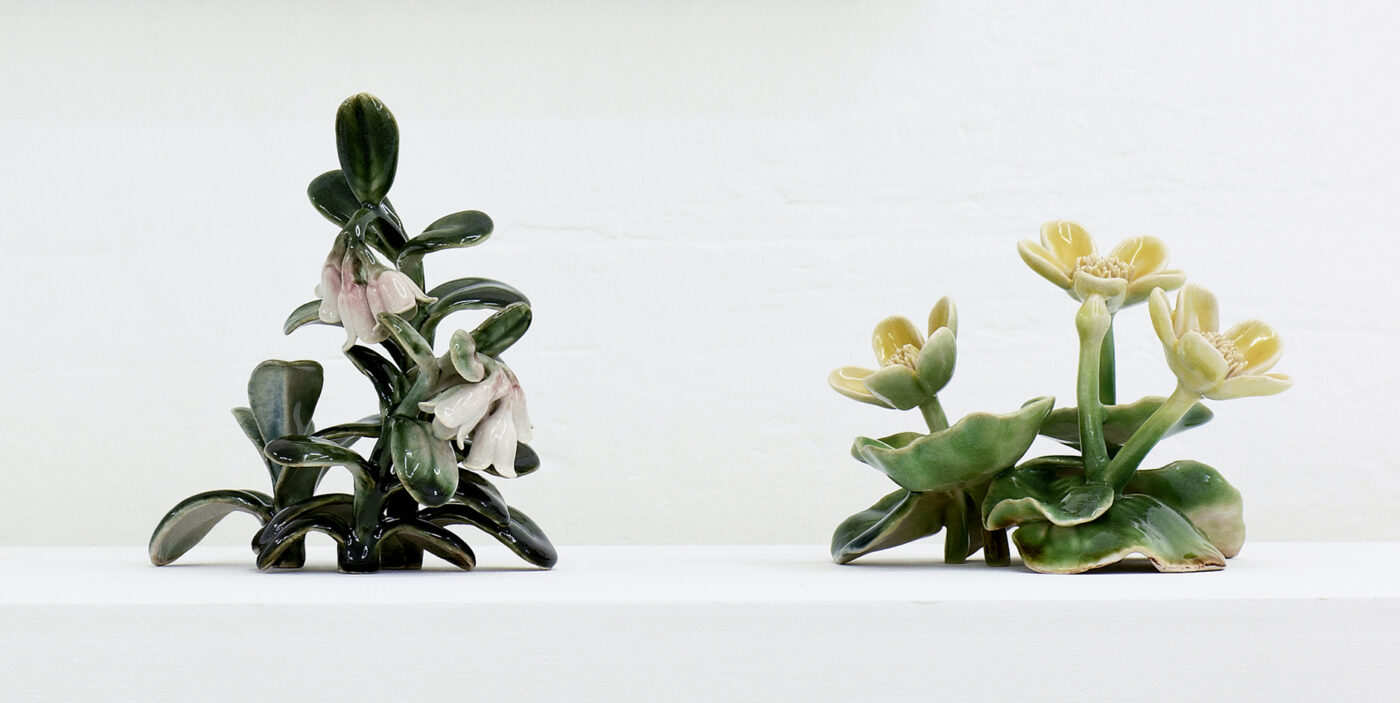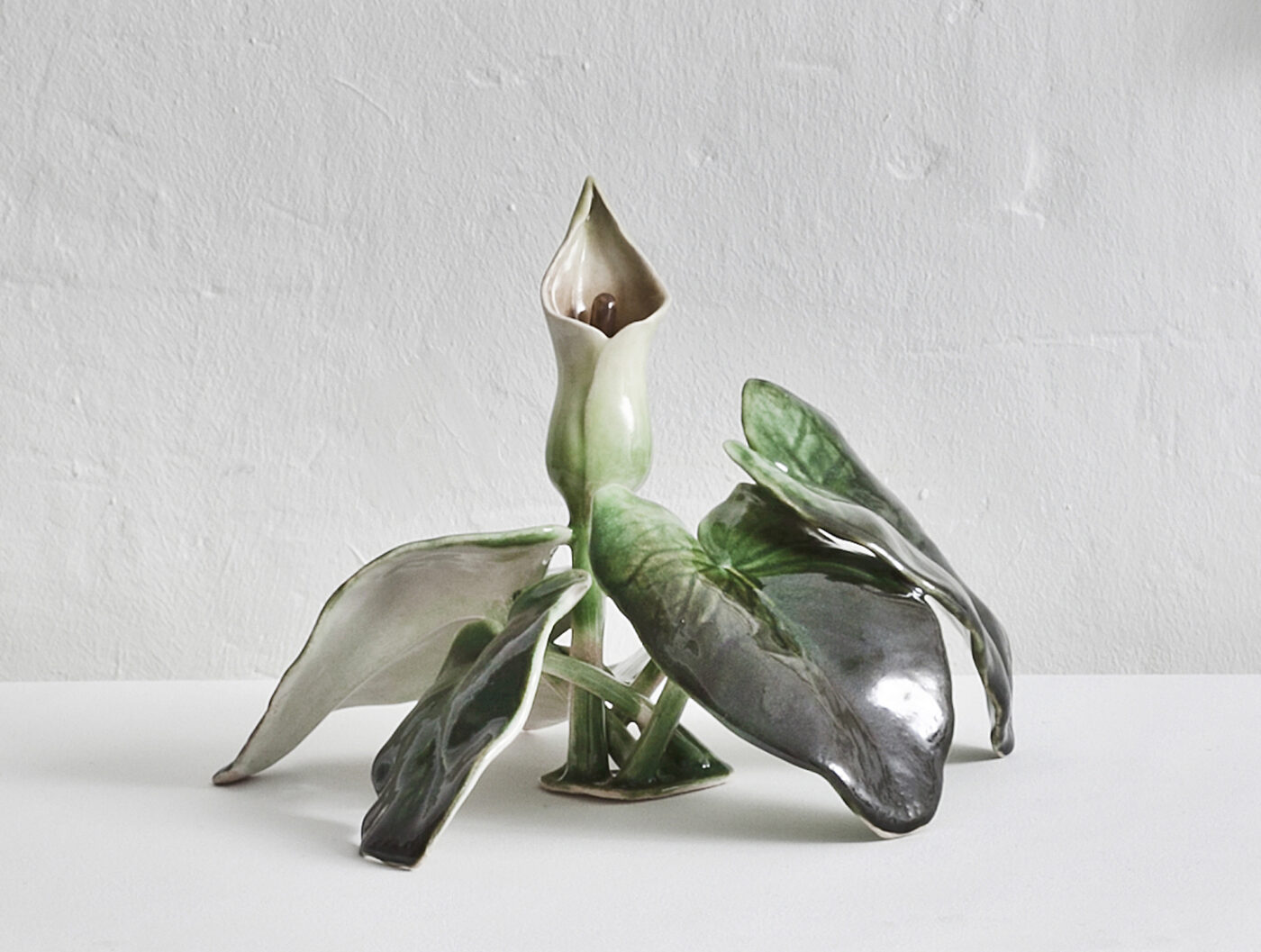Elitær Folklore
Foto: Ole Akhøj og Jeppe Gudmundsen-Holmgreen.
“Elitist Folklore”. Exhibition with Anne Tophøj at Copenhagen Ceramics 2012.
Fadet, tallerkenen, bordet, blomsten. Hverdagens mest almindelige genstande og naturens mest elskede forekomster er med til at ramme de fleste menneskers liv ind. I den fælles udstilling på Copenhagen Ceramics undersøger Marianne Nielsen og Anne Tophøj hvorfor og hvordan vi værdsætter disse almene udtryk for kultur og natur. Men hvad er elitær folklore? Hvad sker der når det folkloristiske ses gennem elitære briller? Og omvendt, når det elitære bringes ind i folklorens verden?
Blomsterne til udstillingen kommer af interessen for naturens rolle i vores kultur. Naturemner som bjerge, fjer, blomster og planter, henviser som en slags souvenirs, til noget udenfor os, som er vedvarende, universelt og som ved sin ægthed rummer grundlæggende skønhed. Alligevel handler naturgengivelserne om os selv, fordi det er gennem vores eget blik at emnerne får mening.
Blomster indtager en beskeden position i kunsten, som noget banalt, blødt, ofte tildelt dekorationens birolle. Her har blomsten fået lov til at stå alene for derved at udgøre hele værket. Værkerne handler også om det, der ikke er direkte til stede – referencerne, der knytter sig til blomster, både som skønheds- og naturrepræsentanter. Men også om den brug af dem, der har slidt blomstermotivet ned til en kliché.
The dish, the plate, the table and the flower. These common everyday objects and the most beloved iconic shapes from nature are framing in the lives of most people. For the shared exhibition at Copenhagen Ceramics Marianne Nielsen and Anne Tophøj are investigating why and how we value these universal expressions of culture and nature. But what is elitist folklore? What does it look like from their point of view?
The flowers for the exhibition comes from the interest in the role of nature in our culture. Natural subjects such as mountains, feathers, flowers and plants refer as a kind of souvenir to something beyond ourselves, being continuous, universal and something which, through its authenticity, contains an essential beauty. Yet, the representations of nature are about ourselves, since they only acquire their meaning through our very own gaze.
Flowers hold a modest position in the arts as something banal, soft, often assigned the subordinate part. For these pieces I have let the flower be on its own, allowing it to make up the entire work. The works are also about what is not directly present – the references linked to flowers, both as representatives of beauty and nature. But they also deal with that particular application that has worn down the flower-motif and turned it into a clich.










